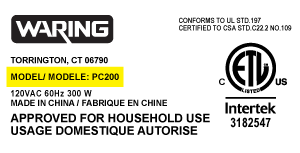KHWS02RMT3 KitchenAid Washer - Instructions
Keep searches simple. Use keywords, e.g. "leaking", "pump", "broken" or "fit".
the pump wasnt puping out the water
firts remover the three bolts that held the front panel on, and removed that. Then removed the screw that held the pump in place. then removed the hoses from the pump. After that put hoses on new pump and srewed back in place . the put front back on.
Parts Used:
-
Evette from Mayfield, NY
-
Difficulty Level:Easy
-
Total Repair Time:15 - 30 mins
-
Tools:Pliers, Socket set
3 of 4 people
found this instruction helpful.
Was this instruction helpful to you?
Thank you for voting!
The washing machine was not draining. It was showing a code on the washer of 02.
We removed the front cover to the washer. Then we removed the drain pump piece that was broken. We put the new drain pump in and secured the screws. We also inspected all the hoses to make sure the hose clamps were intact. Then leaving the front cover off the machine to inspect for leaks we turned on the wash cycle. No more problems.
Parts Used:
-
Robin from Gary, TX
-
Difficulty Level:Really Easy
-
Total Repair Time:Less than 15 mins
-
Tools:Screw drivers
3 of 4 people
found this instruction helpful.
Was this instruction helpful to you?
Thank you for voting!
Washing machine wouldn't run. Kept making buzzing sound and didn't show door latched.
Removed the 3 screws that hold the bottom front panel in place. Removed the 3 screws that hold the door latch in place and pulled out on the bottom of the door which wasn't very much and slid the door latch out to get to the wire connections. Connected the wires to the new latch and pulled out bottom again and put the latch back into place and put the 3 screws back in. Note: make sure you unplug the washer so you don't have a chance to get shocked. Level of difficulty was pretty easy.
Parts Used:
-
Keith from Amherst, OH
-
Difficulty Level:Easy
-
Total Repair Time:15 - 30 mins
-
Tools:Screw drivers
4 of 7 people
found this instruction helpful.
Was this instruction helpful to you?
Thank you for voting!
Torn bellow lip
Replace bellow with help from Youtube video.
Parts Used:
-
Christopher from MORGAN HILL, CA
-
Difficulty Level:A Bit Difficult
-
Total Repair Time:More than 2 hours
-
Tools:Nutdriver, Socket set
3 of 4 people
found this instruction helpful.
Was this instruction helpful to you?
Thank you for voting!
Washer leaking
-
Carolyn L. from CLAYTON, NY
-
Difficulty Level:Really Easy
-
Total Repair Time:30 - 60 mins
3 of 4 people
found this instruction helpful.
Was this instruction helpful to you?
Thank you for voting!
drum baffle broke and had to be replaced
place new baffle over slots in drum; move toward back of drum and snap in to place pressing down and moving toward front of drum
Parts Used:
-
Alan from GOUVERNEUR, NY
-
Difficulty Level:Really Easy
-
Total Repair Time:Less than 15 mins
3 of 4 people
found this instruction helpful.
Was this instruction helpful to you?
Thank you for voting!
Water filling up in drum when not in use
Took top off with nut driver, disconnected 2 wires , removed one screw holding inlet value. Then I reversed the procedure putting new one on. Maybe 20 min. Of course unplug power and turn off water supplies before starting the job.
Parts Used:
-
Don from Oceana, WV
-
Difficulty Level:Really Easy
-
Total Repair Time:15 - 30 mins
-
Tools:Nutdriver, Pliers
2 of 2 people
found this instruction helpful.
Was this instruction helpful to you?
Thank you for voting!
Baffle broke off due to drying very heavy garments.
Lined the new one up with one hand;(cold beer in the other), snapped it to place, finished.
Parts Used:
-
Lionel from HOCKLEY, TX
-
Difficulty Level:Really Easy
-
Total Repair Time:Less than 15 mins
2 of 2 people
found this instruction helpful.
Was this instruction helpful to you?
Thank you for voting!
Broken baffle in washer.
-
Benjamin from N WILKESBORO, NC
-
Difficulty Level:Very Easy
-
Total Repair Time:Less than 15 mins
2 of 2 people
found this instruction helpful.
Was this instruction helpful to you?
Thank you for voting!
Bellow was torn and water was leaking onto the floor
(These instructions improve on the excellent instructions provided by customer Franck from Anandale, Va.)
The first step is to remove the retainer wire and spring that holds the outside of the bellow in place.
To do this, Open the washer door as far as you can to get it out of the way. Look underneath of the front of the bellow on the outside of the washer where it meets the door. Put your head almost on the floor and look up.
You will find a spring stretched about 3" connected to a small diameter wire (1mm.) that runs all the way around the outside portion of the bellow.
Use a small screwdriver or needle-nosed pliers to pull and pry the spring away from the rubber bellow. Be careful not to damage the spring or ring. Once you have grip on it, pull it carefully toward you then up and off of the bellow.
The front portion of the bellow is now free and can be peeled off. Start at any point and pull the rubber bellow in toward the opening of the washer, it comes off easily.
When you get to the detergent outlet on the upper left side, grab the plastic tube and carefully pull the bellow from around it. There is no adhesive or clamp holding this in place, just friction. Remove the rest of the front portion of the bellow.
Push as much of the bellow into the washer as possible to get it out of the way.
Once this is off comes the slightly tricky part. Look up at the top right portion of the bellow that is still attached. You may need to feel with your hand but you should be able to see it. This is where the flashlight or worklight will be helpful. You are looking for the screw/nut end of a giant hose clamp. This hose clamp goes around the entire bellow and secures it to the portion that holds the basket.
This is where the stubby screw driver comes in handy. There is not nearly enough room for a standard one and a nut driver or wratchet are too big. The nut will be pointing down and will need to be replaced the same way.
Loosen the hose clamp almost all of the way, perhaps 5 turns on the nut. It is not necessary to have the hose clamp come completely apart.
You can now remove the entire hose clamp from around the bellow by pulling it forward.
You will need to remove the hose clamp from the washer. To do this, squeeze it in from the sides about 6", don't kink it. Push it down toward the floor between the basket and the metal front panel. You will now be able to remove it from the top of the opening and be able to pull the bottom portion out.
Pull the old bellow completely out, very easy to do.
Time to install the new bellow. Figure out which side goes in and which faces out. The big hint is that the water inlet is on the upper left side.
You will notice at the top of the bellow on the portion that goes inside of the washer, you will find a small triangular shaped tab about 1/4" high. This is your centering mark. This will be at the very top. If you keep this at the top, everything will line up perfectly.
This next step takes a bit of dexterity because you need to slide both the bellows and the hose clamp into the machine with the triangular shaped tab on the bellow at the top as above. Unbend anything that might have bent on the clamp. Put a tiny bit of lube oil or Vaseline on the clamp screw thread to make it easier for your fingers to tighten it with the stubby screwdriver later. The hose clamp must go in now because once the bellow is slid over the detergent inlet tube the hose clamp can not be installed. Slip the bellow over the edge of the portion that holds the basket where you removed the old one. I started at the top and worked left so I could install the detergent inlet tube. Pull this through the bellow carefully. It doesn't take a lot of force. I found that wetting it with water made it easier to slide the bellow over it.
As you are pressing the bellow on this lip, you will notice that there is a 1/2" high back stop all of the way around. This is great because as you press it on, there is a positive stop and you can't go further than necessary. Continue to press it in all of the way around.
With the nut at the top or top right with the nut facing down to the floor while holding it vertically, squish it slightly inward, put the bottom portion in first then the top portion. Orient is as it was when you took it off. Slide it around the bellow. You will feel a positive stop. Run your fingers around the entire bellow to be sure the clamp is seated in the channel on the bellow and that the bellow is against its backstop. This assures you won't have a bad leak upon your next wash.
Grab the stubby screwdriver and tighten down the hose clamp. I did about a medium force when tightening. It doesn't take a lot of force.
Now it is time to pull the remaining part of the bellow out of the basket and fit it into place. Press it around the outside portion of the opening so it hooks over the lip. Now take the retainer wire and spring assembly and use it to clamp the bellow over the lip. After fitting the wire around
The first step is to remove the retainer wire and spring that holds the outside of the bellow in place.
To do this, Open the washer door as far as you can to get it out of the way. Look underneath of the front of the bellow on the outside of the washer where it meets the door. Put your head almost on the floor and look up.
You will find a spring stretched about 3" connected to a small diameter wire (1mm.) that runs all the way around the outside portion of the bellow.
Use a small screwdriver or needle-nosed pliers to pull and pry the spring away from the rubber bellow. Be careful not to damage the spring or ring. Once you have grip on it, pull it carefully toward you then up and off of the bellow.
The front portion of the bellow is now free and can be peeled off. Start at any point and pull the rubber bellow in toward the opening of the washer, it comes off easily.
When you get to the detergent outlet on the upper left side, grab the plastic tube and carefully pull the bellow from around it. There is no adhesive or clamp holding this in place, just friction. Remove the rest of the front portion of the bellow.
Push as much of the bellow into the washer as possible to get it out of the way.
Once this is off comes the slightly tricky part. Look up at the top right portion of the bellow that is still attached. You may need to feel with your hand but you should be able to see it. This is where the flashlight or worklight will be helpful. You are looking for the screw/nut end of a giant hose clamp. This hose clamp goes around the entire bellow and secures it to the portion that holds the basket.
This is where the stubby screw driver comes in handy. There is not nearly enough room for a standard one and a nut driver or wratchet are too big. The nut will be pointing down and will need to be replaced the same way.
Loosen the hose clamp almost all of the way, perhaps 5 turns on the nut. It is not necessary to have the hose clamp come completely apart.
You can now remove the entire hose clamp from around the bellow by pulling it forward.
You will need to remove the hose clamp from the washer. To do this, squeeze it in from the sides about 6", don't kink it. Push it down toward the floor between the basket and the metal front panel. You will now be able to remove it from the top of the opening and be able to pull the bottom portion out.
Pull the old bellow completely out, very easy to do.
Time to install the new bellow. Figure out which side goes in and which faces out. The big hint is that the water inlet is on the upper left side.
You will notice at the top of the bellow on the portion that goes inside of the washer, you will find a small triangular shaped tab about 1/4" high. This is your centering mark. This will be at the very top. If you keep this at the top, everything will line up perfectly.
This next step takes a bit of dexterity because you need to slide both the bellows and the hose clamp into the machine with the triangular shaped tab on the bellow at the top as above. Unbend anything that might have bent on the clamp. Put a tiny bit of lube oil or Vaseline on the clamp screw thread to make it easier for your fingers to tighten it with the stubby screwdriver later. The hose clamp must go in now because once the bellow is slid over the detergent inlet tube the hose clamp can not be installed. Slip the bellow over the edge of the portion that holds the basket where you removed the old one. I started at the top and worked left so I could install the detergent inlet tube. Pull this through the bellow carefully. It doesn't take a lot of force. I found that wetting it with water made it easier to slide the bellow over it.
As you are pressing the bellow on this lip, you will notice that there is a 1/2" high back stop all of the way around. This is great because as you press it on, there is a positive stop and you can't go further than necessary. Continue to press it in all of the way around.
With the nut at the top or top right with the nut facing down to the floor while holding it vertically, squish it slightly inward, put the bottom portion in first then the top portion. Orient is as it was when you took it off. Slide it around the bellow. You will feel a positive stop. Run your fingers around the entire bellow to be sure the clamp is seated in the channel on the bellow and that the bellow is against its backstop. This assures you won't have a bad leak upon your next wash.
Grab the stubby screwdriver and tighten down the hose clamp. I did about a medium force when tightening. It doesn't take a lot of force.
Now it is time to pull the remaining part of the bellow out of the basket and fit it into place. Press it around the outside portion of the opening so it hooks over the lip. Now take the retainer wire and spring assembly and use it to clamp the bellow over the lip. After fitting the wire around
Parts Used:
-
Robert from GLENVILLE, NY
-
Difficulty Level:Easy
-
Total Repair Time:15 - 30 mins
-
Tools:Screw drivers
2 of 2 people
found this instruction helpful.
Was this instruction helpful to you?
Thank you for voting!
Replacing the heat sensor following an F-24 Error Notice.
I followed your repair video explicitly, simple fix. However, one should
be careful when disconnecting the two prong electrical connector from
the heat sensor. the two black wires can pull free easily. In that case, the
rear of the female plastic wired connector must be extracted to allow the two black wires to be "pushed" into the narrow slot which displaces the
wire insulation and allows for a good electrical connection. If a punch tool is not available a pair of needle nose pliers works. Also, observe
the orientation slots on both the male andfemale connectors - they
connect one way only! I set the washer on it's face while effecting this
repair to better see what I was doing (eyesight not as good as it used to be). Thanks for the timely support!
be careful when disconnecting the two prong electrical connector from
the heat sensor. the two black wires can pull free easily. In that case, the
rear of the female plastic wired connector must be extracted to allow the two black wires to be "pushed" into the narrow slot which displaces the
wire insulation and allows for a good electrical connection. If a punch tool is not available a pair of needle nose pliers works. Also, observe
the orientation slots on both the male andfemale connectors - they
connect one way only! I set the washer on it's face while effecting this
repair to better see what I was doing (eyesight not as good as it used to be). Thanks for the timely support!
Parts Used:
-
william from VIRGINIA BCH, VA
-
Difficulty Level:Really Easy
-
Total Repair Time:30 - 60 mins
-
Tools:Nutdriver, Pliers
2 of 2 people
found this instruction helpful.
Was this instruction helpful to you?
Thank you for voting!
Water slowly filling the wash drum and spilling out front of machine
Water was slowly filling the wash tub and spilling out front of machine. Cause was the water inlet valve solenoid was not fully closing.
Turn off water to the machine
Unplug machine
Pull machine away from the wall
Remove the water inlet hoses.
At the back-top of the machine remove the three screws holding the top on.
Lift up top from the rear and remove it.
Disconnect the hose connected to the water inlet valve.
On the outside of the back panel remove the screw holding the water inlet valve.
Remove the water inlet valve.
Reverse the process to install the new valve
NOTE: in my case the hold in the back panel did not line up with the hole in the new water inlet valve. I drilled another hole.
Turn off water to the machine
Unplug machine
Pull machine away from the wall
Remove the water inlet hoses.
At the back-top of the machine remove the three screws holding the top on.
Lift up top from the rear and remove it.
Disconnect the hose connected to the water inlet valve.
On the outside of the back panel remove the screw holding the water inlet valve.
Remove the water inlet valve.
Reverse the process to install the new valve
NOTE: in my case the hold in the back panel did not line up with the hole in the new water inlet valve. I drilled another hole.
Parts Used:
-
Frank from WEST WINDSOR, NJ
-
Difficulty Level:Really Easy
-
Total Repair Time:30 - 60 mins
-
Tools:Nutdriver, Pliers
2 of 2 people
found this instruction helpful.
Was this instruction helpful to you?
Thank you for voting!
Replace tub to pimp hose.
Factory hose clamps were awkward to maneuver. I used automotive radiator hose clamps instead. They worked great.
Parts Used:
-
Bob from LORAIN, OH
-
Difficulty Level:Easy
-
Total Repair Time:30 - 60 mins
-
Tools:Pliers, Screw drivers
2 of 2 people
found this instruction helpful.
Was this instruction helpful to you?
Thank you for voting!
Low water flow into dispenser and washer tub
Super simple repair, videos on this site were spot-on.
1. Turn off water, unplug washer, and disconnect the hoses from the back of the washer.
2. Remove the three T20 torx screws holding on the top of the washer, slide the top back about an inch, and lift off.
3. Remove the T20 torx screw holding the water valve to the back plate of the washer.
4. Using pliers, release the hose clamp on the outlet hose of the valve and slide it down about an inch.
5. Remove the old valve and attach the new one to the outlet hose. Reinstall the hose clamp.
6. Replace the screw that holds the valve to the back plate and reinstall the top of the washer. Reconnect hoses the the washer, turn on water, and plug back the washer back in.
7. Odds are, your water flow has been low for a while and the first cycle is going to flush a good bit of mildew and other gunk into the washer drum. Run a cleaning cycle with about 1/3 cup bleach through the washer prior to using.
Should be good to go!
1. Turn off water, unplug washer, and disconnect the hoses from the back of the washer.
2. Remove the three T20 torx screws holding on the top of the washer, slide the top back about an inch, and lift off.
3. Remove the T20 torx screw holding the water valve to the back plate of the washer.
4. Using pliers, release the hose clamp on the outlet hose of the valve and slide it down about an inch.
5. Remove the old valve and attach the new one to the outlet hose. Reinstall the hose clamp.
6. Replace the screw that holds the valve to the back plate and reinstall the top of the washer. Reconnect hoses the the washer, turn on water, and plug back the washer back in.
7. Odds are, your water flow has been low for a while and the first cycle is going to flush a good bit of mildew and other gunk into the washer drum. Run a cleaning cycle with about 1/3 cup bleach through the washer prior to using.
Should be good to go!
Parts Used:
-
Daniel from WAKE FOREST, NC
-
Difficulty Level:Really Easy
-
Total Repair Time:15 - 30 mins
-
Tools:Pliers, Screw drivers
2 of 2 people
found this instruction helpful.
Was this instruction helpful to you?
Thank you for voting!
Torn bellows was leaking and eating clothes
Followed directions as shown in your repair video, having done this for the first time it took a bit longer than a repairman would have but was able to git-r-done. The most difficult part was fitting the adjustable wire back around the front of the washer, in the video it is made to look really easy however in real life it is a little more difficult and could not be attached so easily and took quite a bit of time to make sure it was attached correctly. thank you for your help.
Parts Used:
-
James from NEWBERG, OR
-
Difficulty Level:A Bit Difficult
-
Total Repair Time:More than 2 hours
-
Tools:Nutdriver, Pliers, Screw drivers, Socket set
2 of 2 people
found this instruction helpful.
Was this instruction helpful to you?
Thank you for voting!

































